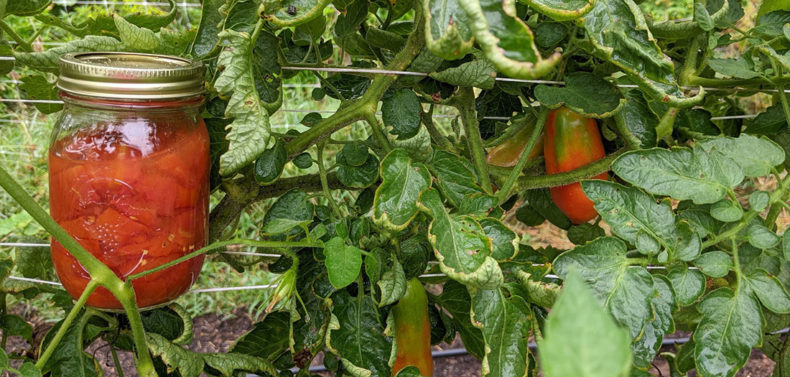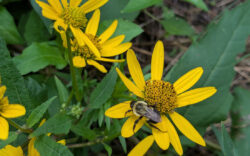Late summer means enjoying the fruits of your garden labor: homemade salsas, grilled veggies and fresh herbs adding zing to meals. August also reminds me to put away more food for the coming winter. On a scale of one to professional doomsday prepper, I’m a solid two. That being said, there’s nothing quite as homey or comforting as using my own summer tomatoes to make pasta sauce in January. Whether you have an herb garden on your porch or dozens of tomato plants in your backyard, here are a few ways to give your winter meals a taste of summer.
Drying Herbs: The easiest herbs to dry are thin, leafy ones like thyme, basil and dill. Some folks cut and bundle their herbs with string, desiccating the leaves by leaving them in a dry, sunny location, like a window, for several weeks. I live in an old farmhouse where spiders spin webs on anything that doesn’t move overnight. As picturesquely witchy as bundled herbs hanging across windows can be, drying herbs in an oven might be your best bet. Keep the oven on its lowest setting and check the progress every 10–15 minutes. The herbs are dry enough to store when they crumble easily to the touch. I store mine in clear containers so I can check for any moisture damage during the next few weeks.
Freeze It: Not all produce freezes, but with a little prep work, a lot of produce can be frozen. I prefer reusable plastic containers and sturdy freezer bags because they stack better. If you use canning jars, be sure to use wide-mouth canning jars only. The jars with necks can crack when the contents expand. Before freezing, I prep my veggies and fruits as if I’ll be cooking with them. For example, I deseed and dice my peppers. When I go to use them in the winter, I’ll open a bag and throw a handful into whatever curry, stir fry or chili I’ve got cooking on the stove. The best way to preserve flavor and texture is by blanching produce before freezing it. One farmer I know blanched and froze her extra zucchini instead of stressing over concocting yet another summer squash-based dinner. Smart!
Can It: Canning requires some specialized equipment, time and attention. Cutting corners on a recipe can mean poisoning yourself with botulism, a bacteria that grows without oxygen and causes serious illness by attacking the body’s nerves. I use the Better Homes & Gardens’ “Complete Canning Guide” for directions, but you also can find free informational leaflets at the UGA Extension Service in person or online at fcs.uga.edu/extension/food-preservation. For canning beginners, I would avoid total reliance on casual online guides or videos. They could accidentally leave out important safety information. Heck, I’ve exploded jars of tomatoes all over my kitchen by forgetting to put a hot jar on a cooling rack.
Pickle It: You can pickle produce without canning it, or pickle and can it. I think pickling is easier than regular canning, because the added acidity only allows lactobacilli bacteria to propagate. That bacteria makes pickles sour and also protects against toxic bugs like botulism. In pickling, basic recipes call for a certain amount of veggies, spices and four cups of vinegar. Be forewarned, pickling can become a bit addicting. I regularly pickle jalapeños, okra and beans. While canning preserves the results for months, you don’t need a special set-up to enjoy pickling produce and munching on tasty pickles for a few weeks. I still suggest sticking to recipes from vetted sources. Not all vinegars are interchangeable and can have different amounts of acidity.
Other Ideas: There are many other ways to preserve your harvest in fun and interesting ways than I can list here. I didn’t even touch on jams or jellies—mostly because I’m terrible at them. Fermentation, like the process behind kimchi, is another technique I’ve experimented with, but have so far failed to master. Grandmothers (yours or someone else’s) are a great resource, as is the ACC Library’s collection of cookbooks. Whatever you decide to do, I hope you enjoy a few new food adventures in preservation.
Like what you just read? Support Flagpole by making a donation today. Every dollar you give helps fund our ongoing mission to provide Athens with quality, independent journalism.










